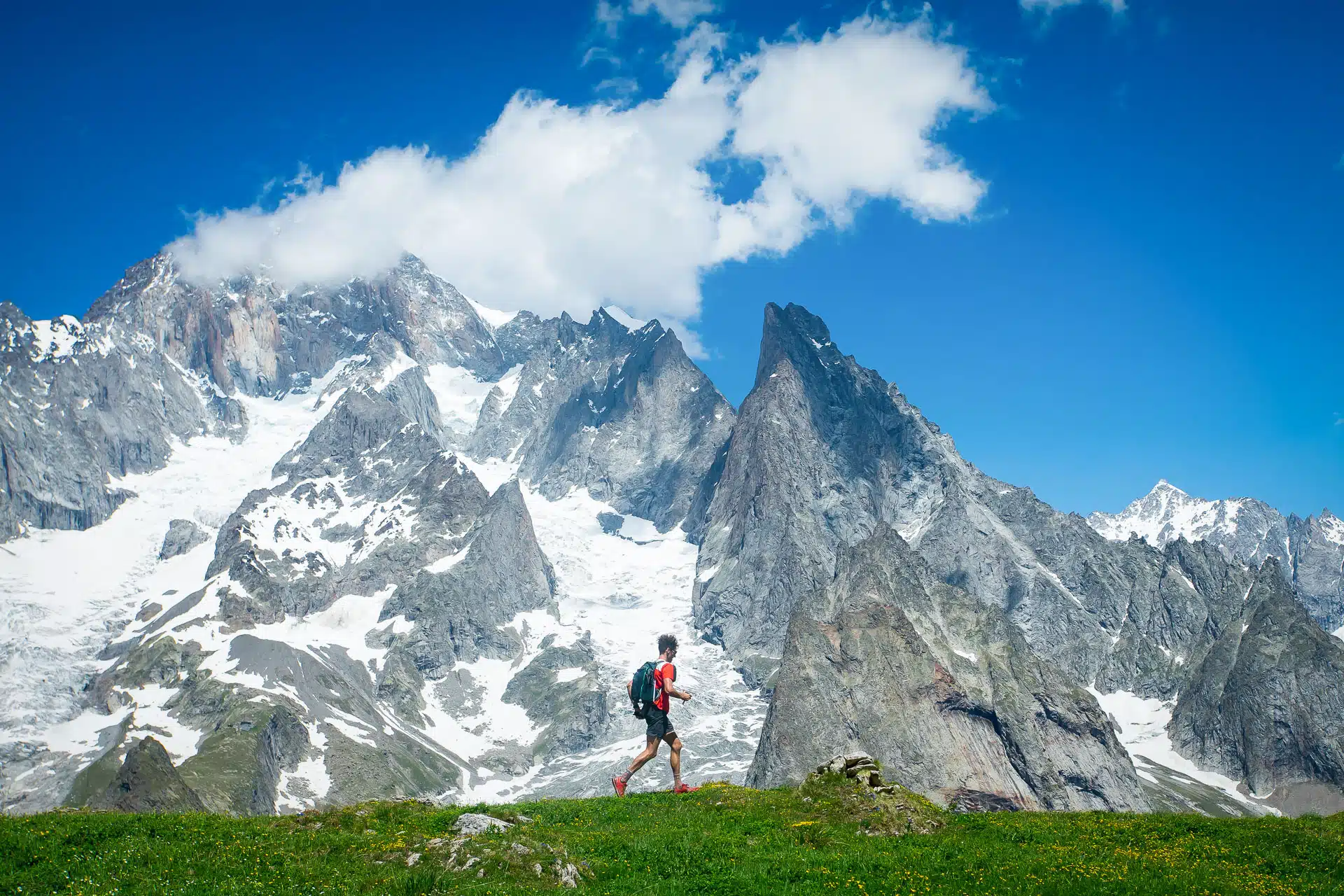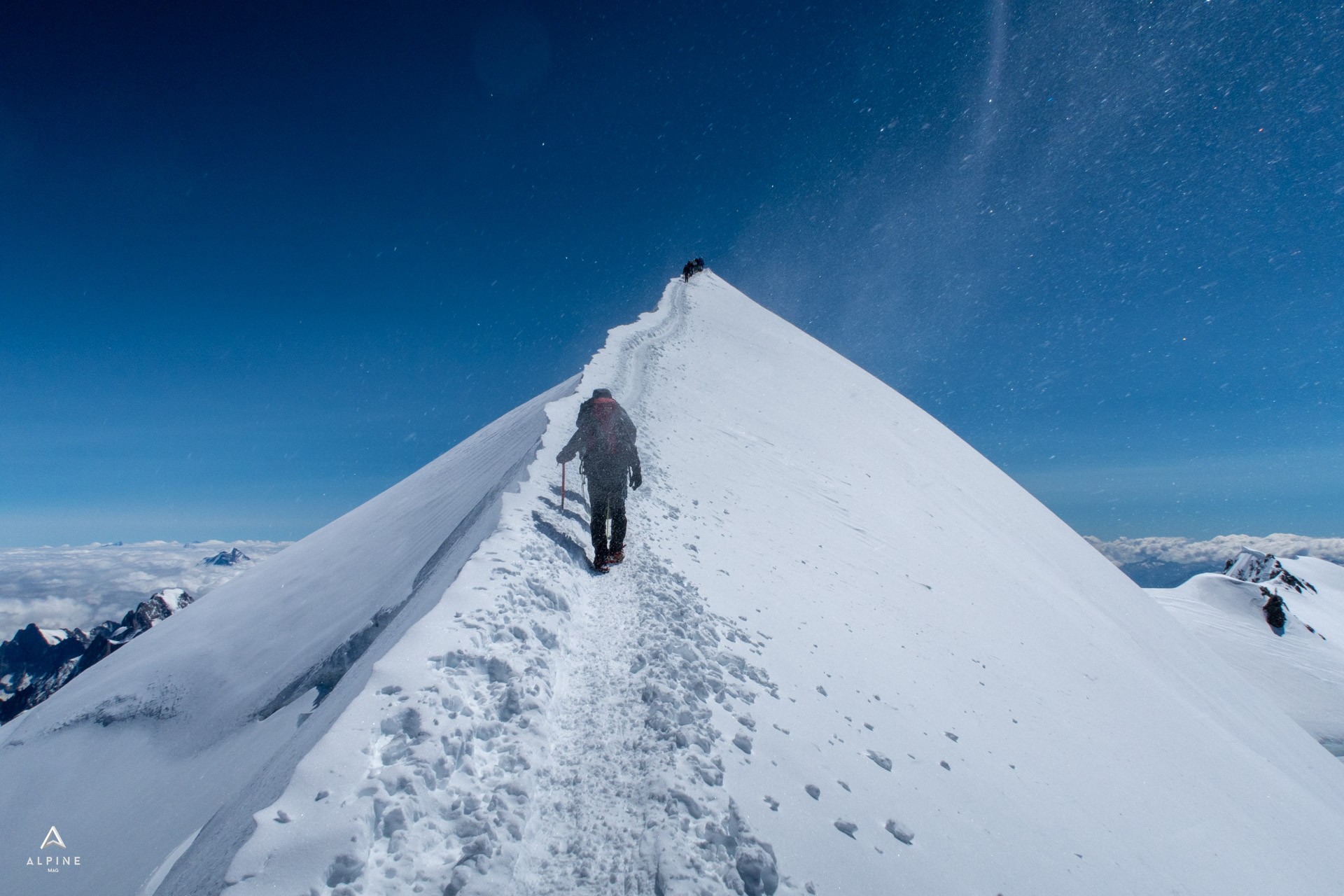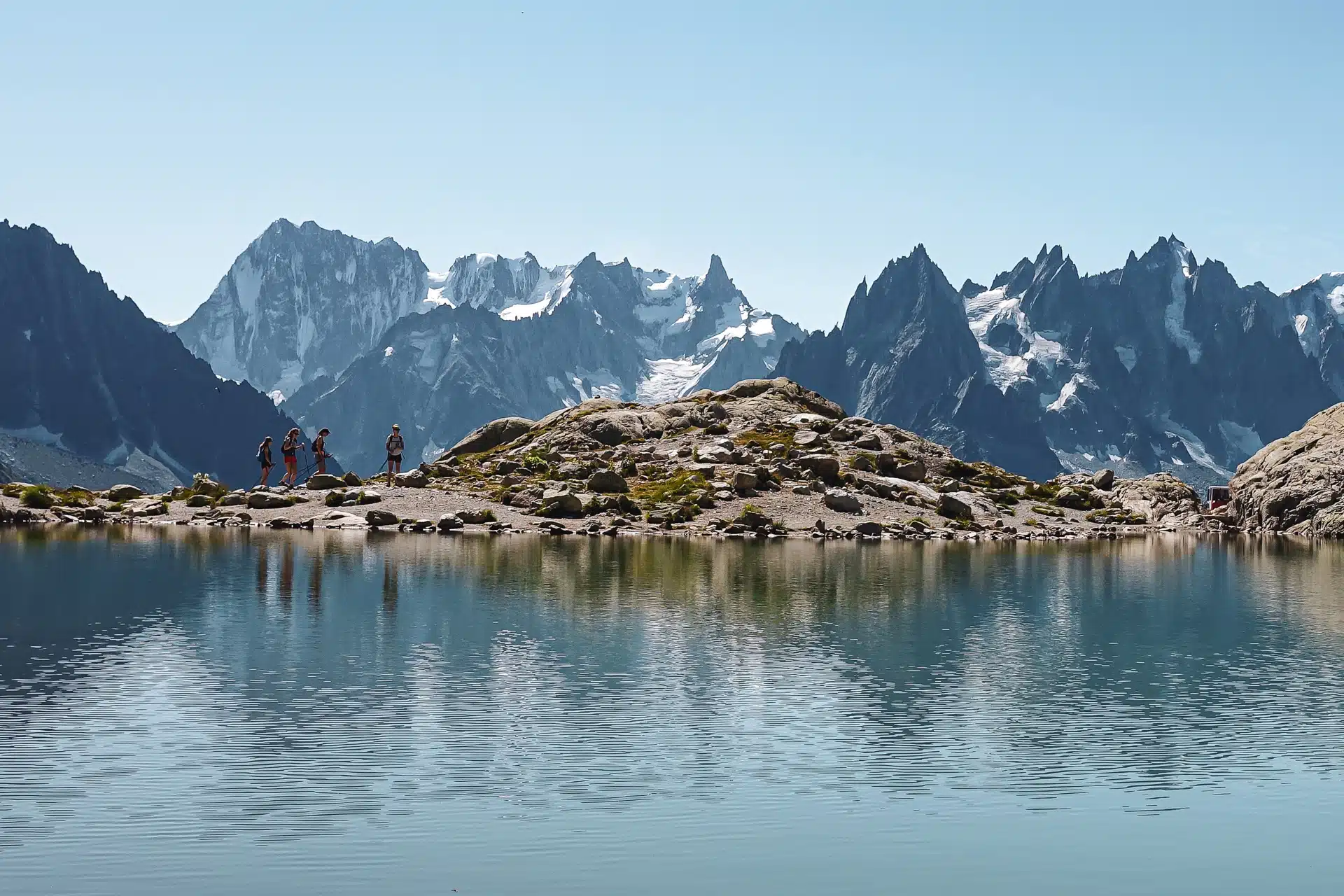Mont Blanc is the highest mountain in the Alps and Western Europe, moreover it is also both one of the most beautiful places in the world and an endless playground for outdoor enthusiasts. Here are the keys to discovering the most beautiful trek in the Alps, on foot or by bike, or climbing the summit itself, ice axe in hand.
Mont Blanc is not only the roof of Europe, it’s also one of the most magical destinations in the Alps. Exploring the Mont Blanc area is not just an adventure; it’s an odyssey through the heart of the Alps, an exploration of diverse terrains, and an immersion in the unparalleled beauty that surrounds the highest mountain in the region — Mont Blanc.
This iconic peak stands not only as a majestic natural wonder, and highest mountain in the Alps and Western Europe, but also as an open playground for outdoor enthusiasts, beckoning mountaineers, climbers, hikers of all levels, skiers, trail runners, road bikers, mountain bikers, paragliders, and more. Each visitor discovers their unique way to revel in the captivating allure of this exceptional locale, where breathtaking landscapes unfold in every direction, promising unforgettable experiences.
Biking the Tour du Mont-Blanc: A Cyclable Journey Through Alpine Splendor
Cylcing the Tour du Mont-Blanc is like taking a grand cycling tour through the heart of the Alps. Winding through cyclable roads and traversing world-renowned passes with awe-inspiring views of the entire mountain range, this journey can be accomplished in three to eight days, depending on your skill level. Starting and ending in the iconic town of Chamonix, this route rides through Les Saisies and the legendary Roselend pass, evoking memories of Tour de France legends. Venturing further, the Petit Saint Bernard pass leads to Italy, followed by the Grand Saint Bernard pass into Switzerland before returning to France through the picturesque vineyards along the ascent of the Trient pass.
Classic Tour du Mont-Blanc: A Hiking Odyssey Across Three Countries
The Classic Tour du Mont Blanc is a bucket-list must-do for hikers across France, Italy, and Switzerland. This world famous hiking route, with three main passes surpassing 2500 meters in elevation, unfolds unparalleled views of Mont Blanc and its expansive range. Amidst the breathtaking landscapes, encounters with the local wildlife, including ibex, marmots, and eagles, become everyday highlights. Whether choosing the hut-to-hut experience or opting for a more comfortable hotel version, the journey is enriched by the cultural and gastronomical experiences of the three distinct countries traversed.
Tour du Mont-Blanc Highlights
The Val Ferret, Italy and Switzerland: This valley offers stunning views of the Grandes Jorasses and the Mont Blanc massif. The Italian Val Ferret is particularly known for its charming villages and beautiful landscapes, while the Swiss Val Ferret is quieter and more remote.
Chamonix Valley, France: Starting or finishing in Chamonix adds a dramatic backdrop to the trek, with spectacular views of Mont Blanc and the Mer de Glace glacier. Chamonix itself is a vibrant town, bustling with alpine culture and history.
Col du Bonhomme and Col de la Croix du Bonhomme, France: This challenging section offers some of the most breathtaking high-mountain scenery on the trek, including panoramic views of the Aiguilles des Glaciers.
Lac Blanc, France: Accessible via a detour from the main TMB route, Lac Blanc is renowned for its stunning reflective views of Mont Blanc. The surrounding area, with its dramatic rocky landscape and alpine lakes, is a photographer’s paradise.
The Grand Col Ferret, the border between Italy and Switzerland: This high mountain pass offers spectacular views and marks the transition between the Italian and Swiss sections of the trail, highlighting the diverse beauty and character of the Alps.
The Tour du Mont Blanc is not just a trek; it’s an immersive journey through some of Europe’s most majestic landscapes, offering both physical challenges and profound personal rewards. Its combination of natural beauty, cultural diversity, and accessibility makes it a bucket-list adventure for hikers worldwide.
To the Top of Mont-Blanc: A Summit Ascent Adventure
For those seeking the pinnacle of adventure, the shortest circle around Mont-Blanc involves reaching its summit. The Mont Blanc ascent begins in Saint-Gervais, a charming thermal town, with a train ride ascending 1700 meters to the Nid d’Aigle station. The hike to the Tete Rousse hut, facing the formidable north face of Aiguille de Bionnassay, serves as an introduction to the high-mountain environment.
The final ascent to the Gouter hut requires unwavering focus and reserved energy, setting the stage for the classic base camp for the next day’s ascent. The early morning start, with headlamps lighting the way, creates an ethereal atmosphere as climbers ascend the final “arête des Bosses.” Witnessing the sunrise from this vantage point is a mountaineering moment of unparalleled beauty, and standing on the summit of the Alps is an achievement as grand as it sounds!
Be an Early Bird: Planning Your Mont Blanc Experience
Regardless of your dreams, skills, or fitness level, there is a way to experience Mont Blanc. However, it’s crucial to plan early, as Mont Blanc Experiences groups and local accommodations quickly reach full capacity. Secure your spot and explore all the information about the myriad options offered by the Mont-Blanc specialists, ensuring that your Mont Blanc journey becomes a cherished chapter in your outdoor adventure story.









